Athletic field fences provide crowd control, venue security, and safety for sporting events. These fences are typically made of chain link and differentiate specific areas of the sporting fields. Whether the fence screens athletes or protects viewers; the fence is part of the sport played. The venue and level of play take a vital role in determining what fencing will be used at the field. Football, baseball, softball, and tennis are all sports where fence is an important consideration.
High school football athletic field fence is used mainly to separate players and spectators. These fences usually surround the track and are commonly 4 feet high. These chain-link fences are often colored and PVC coated for looks and durability. Double drive gates and maintenance access gates are common at the end of the running track. There are also 4 feet pedestrian gates where players and coaches enter the field of play. An attractive ornamental fence is generally used along the side of the stadium that parallels the road. Specialty fencing is usually a four foot chain-link fence used on the edge of the bleachers to ensure that spectators (mainly children) do not slip between the railings. Most professional football locations do not use fence in the field area, but use railings to separate players and fans.
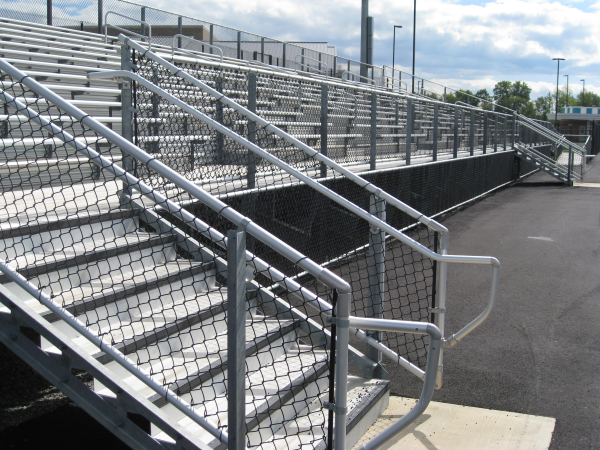 |
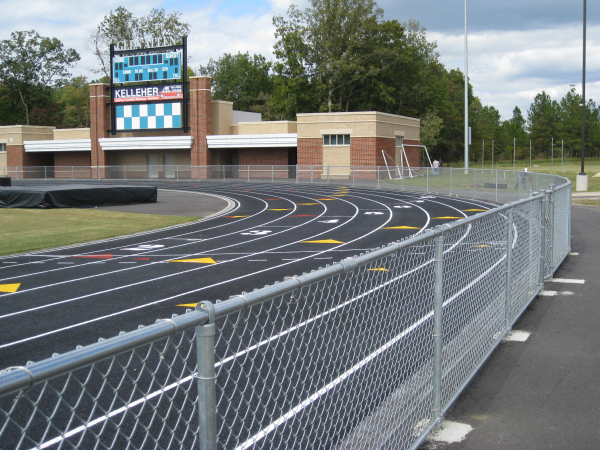 |
Baseball is the most common use athletic field fence. There are numerous variations of fencing on one baseball field. The sideline perimeters of baseball fields are commonly fenced with 4 to 6 foot fence. Backstops are constructed of specialty fence that is three separate sections that are each 30 feet wide and roughly 25 feet high depending on the design with an overhang to prevent foul balls from hitting spectators. Outfield fences are typically 6 feet high and topped with bright yellow tubing. This visual marker allows players to gauge a cautious distance when tracking fly balls also helps players from getting injured on the top rail of the fence. Depending on dugout designs, fence can be attached to front railings or a dugout can be a complete chain link enclosure. Bullpens are also enclosed using chain link fence and can be 8 foot tall and screened with fabric for privacy for the players. Batting cage fences keep baseballs and softballs contained and they are usually made of a thicker 6 gauge of chain link due to it being subjected to such wear and tear.
'Batters eye' screening is a new concept in baseball athletic field fencing. This fence add-on is usually in the center of the outfield fence. It consists of a screen that is 20 feet tall and roughly 140 feet wide. The concept is to give the batter a black background so that the white baseball will stand out. This feature gives the batter a clear and undistracted view of the ball coming from the pitcher. The picture below shows a type of ‘batters eye’ fencing.
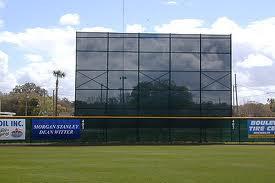 |
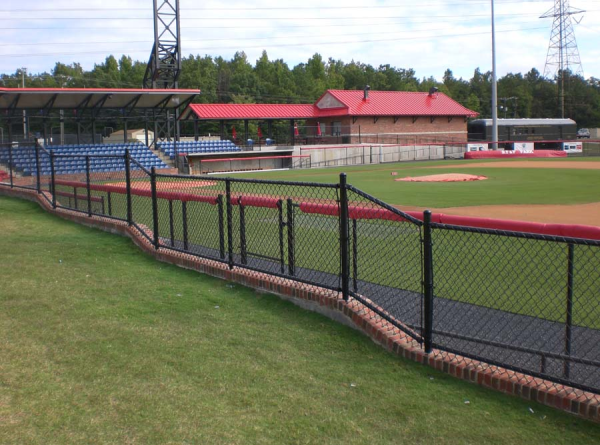 |
Tennis is also a sport that encloses its courts to contain tennis balls. Tennis courts layouts vary tremendously, but the fences by and large are the same. These fences are usually 10 feet tall and 11 gauge mesh galvanized or vinyl coated, the most common vinyl coating color being green. The chain link fabric mesh is 1 3/8 inch as opposed to the standard 2 inch diamond width to prevent the tennis balls from getting stuck in the fence. Top and bottom is used for these fences and middle rail is common due to the fence height. The bottom rail is better option than tension wire because it prevents the balls from rolling out of the court. Screening is common on these fences to reduce the effects of wind on the ball trajectory and also helps prevent the tennis balls from getting wedged in the fence. On rare occasions courts are totally enclosed with a chain link roof. This is more often than not for smaller courts in confined areas.
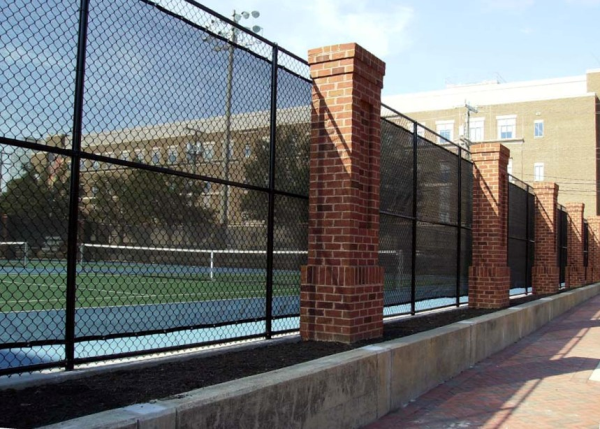 |
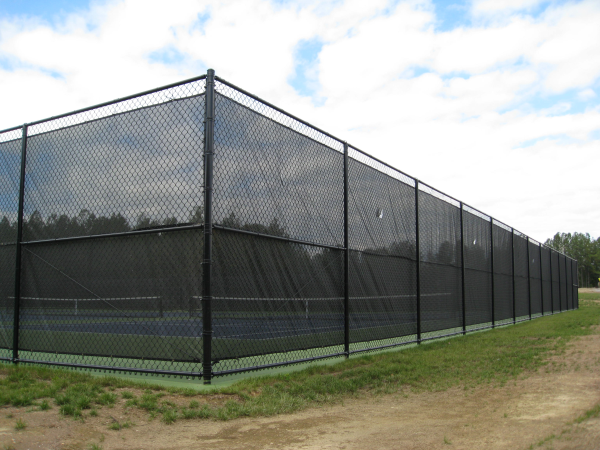 |
Baseball, softball and football fence posts are usually set in the ground with a concrete footing. Tennis fence is usually core drilled into the court, or it can be set before the court is laid down. All fences mentioned above can be vinyl coated for decoration or screened with fabric depending on the needs of the field.
So next time you attend a sporting venue, take a look around to see the many types of fence. Venues use fence to decorate and to serve many purposes.
Article contributed by Nate Poehlman.


